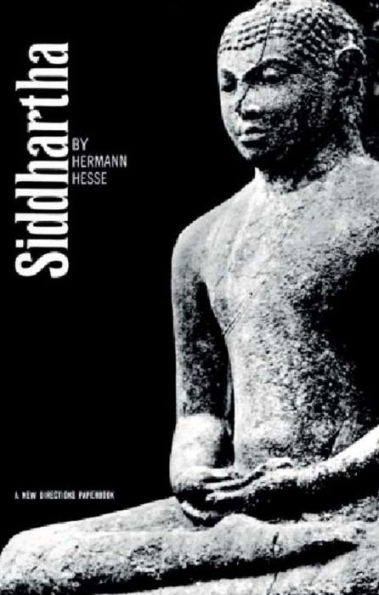Shelf Improvement is a monthly column that features three books guaranteed to improve both your library and your life. From literary fiction, young adult, and humor, to spirituality, autobiography, and more, no genre is off limits. The only requirement of the selections featured here is they must be transformative and page-turning. If you’re hoping to build a better […]
A book—rare in our arid age—that takes root in the heart and grows there for a lifetime.
Here the spirituality of the East and the West have met in a novel that enfigures deep human wisdom with a rich and colorful imagination.
Written in a prose of almost biblical simplicity and beauty, it is the story of a soul's long quest in search of he ultimate answer to the enigma of man's role on this earth. As a youth, the young Indian Siddhartha meets the Buddha but cannot be content with a disciple's role: he must work out his own destiny and solve his own doubt—a tortuous road that carries him through the sensuality of a love affair with the beautiful courtesan Kamala, the temptation of success and riches, the heartache of struggle with his own son, to final renunciation and self-knowledge.
The name "Siddhartha" is one often given to the Buddha himself—perhaps a clue to Hesse's aims in contrasting the traditional legendary figure with his own conception, as a European (Hesse was Swiss), of a spiritual explorer.
Siddhartha
Here the spirituality of the East and the West have met in a novel that enfigures deep human wisdom with a rich and colorful imagination.
Written in a prose of almost biblical simplicity and beauty, it is the story of a soul's long quest in search of he ultimate answer to the enigma of man's role on this earth. As a youth, the young Indian Siddhartha meets the Buddha but cannot be content with a disciple's role: he must work out his own destiny and solve his own doubt—a tortuous road that carries him through the sensuality of a love affair with the beautiful courtesan Kamala, the temptation of success and riches, the heartache of struggle with his own son, to final renunciation and self-knowledge.
The name "Siddhartha" is one often given to the Buddha himself—perhaps a clue to Hesse's aims in contrasting the traditional legendary figure with his own conception, as a European (Hesse was Swiss), of a spiritual explorer.
A book—rare in our arid age—that takes root in the heart and grows there for a lifetime.
Here the spirituality of the East and the West have met in a novel that enfigures deep human wisdom with a rich and colorful imagination.
Written in a prose of almost biblical simplicity and beauty, it is the story of a soul's long quest in search of he ultimate answer to the enigma of man's role on this earth. As a youth, the young Indian Siddhartha meets the Buddha but cannot be content with a disciple's role: he must work out his own destiny and solve his own doubt—a tortuous road that carries him through the sensuality of a love affair with the beautiful courtesan Kamala, the temptation of success and riches, the heartache of struggle with his own son, to final renunciation and self-knowledge.
The name "Siddhartha" is one often given to the Buddha himself—perhaps a clue to Hesse's aims in contrasting the traditional legendary figure with his own conception, as a European (Hesse was Swiss), of a spiritual explorer.
10.95
In Stock
5
1

Siddhartha
128
Siddhartha
128
10.95
In Stock

Product Details
| ISBN-13: | 9780811200684 |
|---|---|
| Publisher: | New Directions Publishing Corporation |
| Publication date: | 01/17/1957 |
| Series: | A New Directions Paperback |
| Pages: | 128 |
| Sales rank: | 347,150 |
| Product dimensions: | 5.20(w) x 8.00(h) x 0.40(d) |
| Age Range: | 14 - 18 Years |
About the Author
What People are Saying About This
From the B&N Reads Blog
